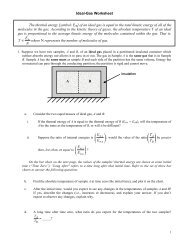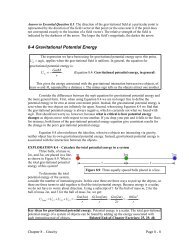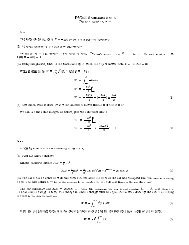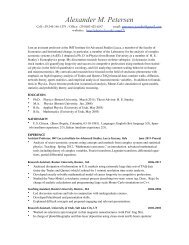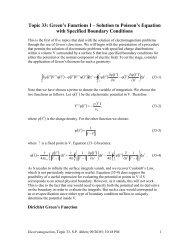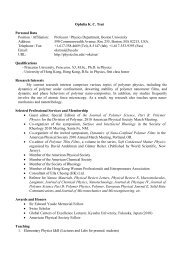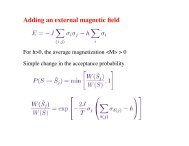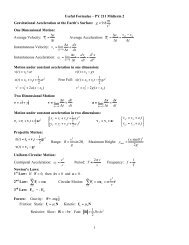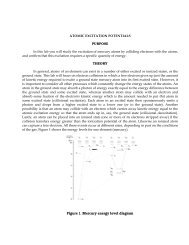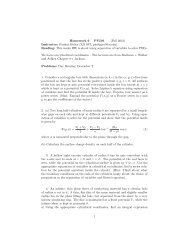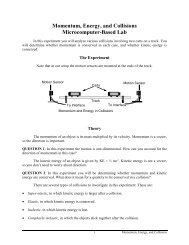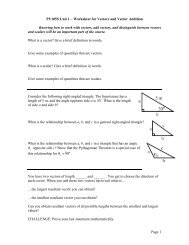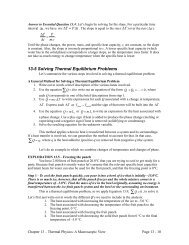Crystal Structure 1 3.1 Some Basic Concepts of Crystal Structure ...
Crystal Structure 1 3.1 Some Basic Concepts of Crystal Structure ...
Crystal Structure 1 3.1 Some Basic Concepts of Crystal Structure ...
You also want an ePaper? Increase the reach of your titles
YUMPU automatically turns print PDFs into web optimized ePapers that Google loves.
<strong>Crystal</strong> <strong>Structure</strong><br />
Since m, n, p, and M are integers, eqn. 3.20 can be valid in general only if j, k, l are<br />
integers. This proves that G must be a reciprocal lattice vector. We now go back to the<br />
evaluation <strong>of</strong> the integral in eqn. <strong>3.1</strong>1. Substitute eqn. <strong>3.1</strong>3 in eqn. <strong>3.1</strong>1, we have:<br />
F <br />
<br />
G<br />
dV n<br />
<br />
G<br />
<br />
exp[ i(<br />
G k<br />
) r]<br />
(3.21)<br />
= V n G (Gk) (3.22)<br />
The factor (Gk) provides an explanation to the Bragg diffraction law, namely k =<br />
GBut more informative than the Bragg diffraction law, eqn. 3.22 even tells us what the<br />
scattering amplitudes be for the various Bragg diffraction peak. In particular for the<br />
diffraction peak corresponding tok G, the scattering amplitude is just proportional to<br />
the G-component (n G ) in the Fourier expansion <strong>of</strong> the sample electronic distribution.<br />
Before we continue with the calculation <strong>of</strong> F, we will divert our discussion to the<br />
important concept <strong>of</strong> Bragg diffraction <strong>of</strong> electrons at a Brillouin zone boundary.<br />
3.31 Brillouin zone<br />
Brillouin zone is defined as a Wigner-Seitz primitive cell in the reciprocal lattice.<br />
As explained before, a Wigner-Seitz cell about a lattice point is constructed by drawing<br />
lines connecting the lattice point to all nearby points in the lattice, bisecting each line<br />
with a plane, and taking the smallest polyhedron containing the point bounded by these<br />
planes. With this construction, ½G must be perpendicular to and terminates at a<br />
Fig. 3.27<br />
boundary <strong>of</strong> the zone (Fig. 3.27). We will show that any wave that has wavevector, k,<br />
drawn from the origin and terminates at a zone boundary always satisfies the Bragg<br />
diffraction condition hence will be Bragg diffracted. From Fig. 3.27, it is obvious that<br />
<br />
k ( G<br />
(3.23)<br />
1 1 2<br />
2 G)<br />
( ) 2<br />
22



![arXiv:1303.7274v2 [physics.soc-ph] 27 Aug 2013 - Boston University ...](https://img.yumpu.com/51679664/1/190x245/arxiv13037274v2-physicssoc-ph-27-aug-2013-boston-university-.jpg?quality=85)
